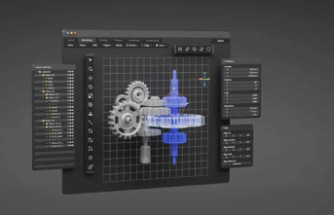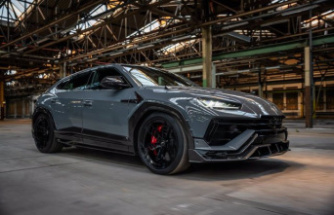New technologies like smart devices, compact computers and the ubiquity of Wi-Fi are allowing more and more people to work when and wherever they want. When combined with an array of solar photovoltaics -- which are getting smaller and cheaper by the day -- one can create a set-up that can allow one to work and to travel almost anywhere in the world.
So it makes sense that we're seeing a slew of young people going the digital nomad route, whether it's in a co-working space abroad, or in a vehicle that's been converted into a full-time live-and-work space. Moreover, the recent explosion of knowledge-sharing and DIY culture in online blogs and videos makes these conversions all the more accessible to complete novices.
Designboom introduces us to Hungarian freelance photographer Norbert Juhász, who fits in the latter category, having adapted an old, nondescript white cargo van into a minimalist home for himself and his fiancée, Dora, a writer.
© Norbert Juhász
Juhász, who has also studied architecture, wanted something different from the hustle and bustle of downtown Budapest. Having met six years ago, the couple recently decided to go the route of full-time "#vanlife", as travelling affords new, stimulating experiences, but also plenty of photographic opportunities. Juhász specifically bought this 16-year-old van (now called Debella) last spring as it doesn't draw too much attention, meaning less hassle if one has to park somewhere for the night.
The interior is defined by a warm, monotone palette of textured, engineered wood panelling, interspersed with some bright, painted surfaces. There is a multifunctional seat that doubles as a bed, and which conceals storage and the electrical system underneath.
© Norbert Juhász
© Norbert Juhász
© Norbert Juhász
Opposite the couch-bed is the kitchen unit, which has a gas cooktop, 11-kilogram gas cylinder, sink and 70-litre water tank with a pressure-sensing pump. An extra hook-up to the tank leads out to the van's rear, providing for quick showers.
© Norbert Juhász
© Norbert Juhász
The L-shaped cabinet on the other end of the van's interior hides the refrigerator and more storage, while one part of it serves as seating for the fold-down table, used for dining in or working on.
© Norbert Juhász
Simple, low-tech and inexpensive materials like OSB (oriented strand board), MDF and reclaimed wood were used. Less green was the spray foam that was used to insulate the van's walls, though more eco-friendly alternatives do exist, depending on the application.
© Norbert Juhász / The van before
The van has a 12-volt electrical system that can be charged with either with the 250-watt roof solar panel, or the engine's generator, or with a regular 220-volt power source. Power can be stored in a bank of 200-Ah batteries, and converted with a 220-volt inverter.
© Norbert Juhász
© Norbert Juhász
In total, the pair spent around USD $7,200 on their conversion, tailoring it specifically for their needs. Norbert and Dora have already begun their van voyage, with their sights set on Morocco as they slowly travel through southern Europe. You can follow their progress on the Rundebella website and Facebook page, or visit Norbert Juhász.
Our editors found this article on this site using Google and regenerated it for our readers.













